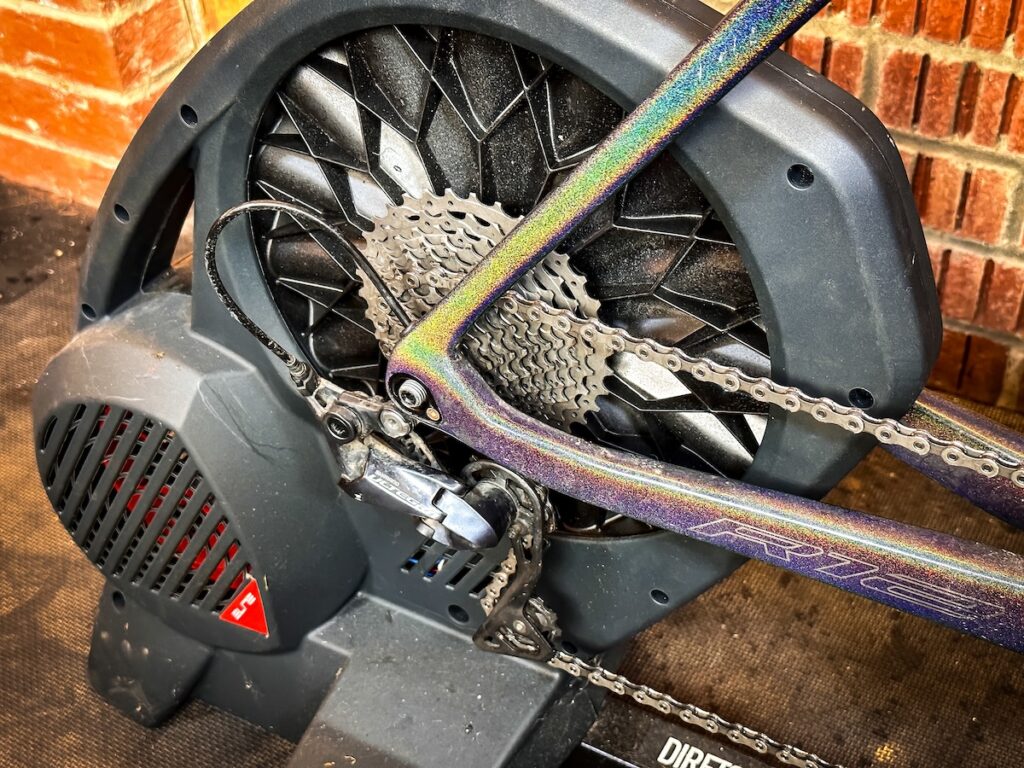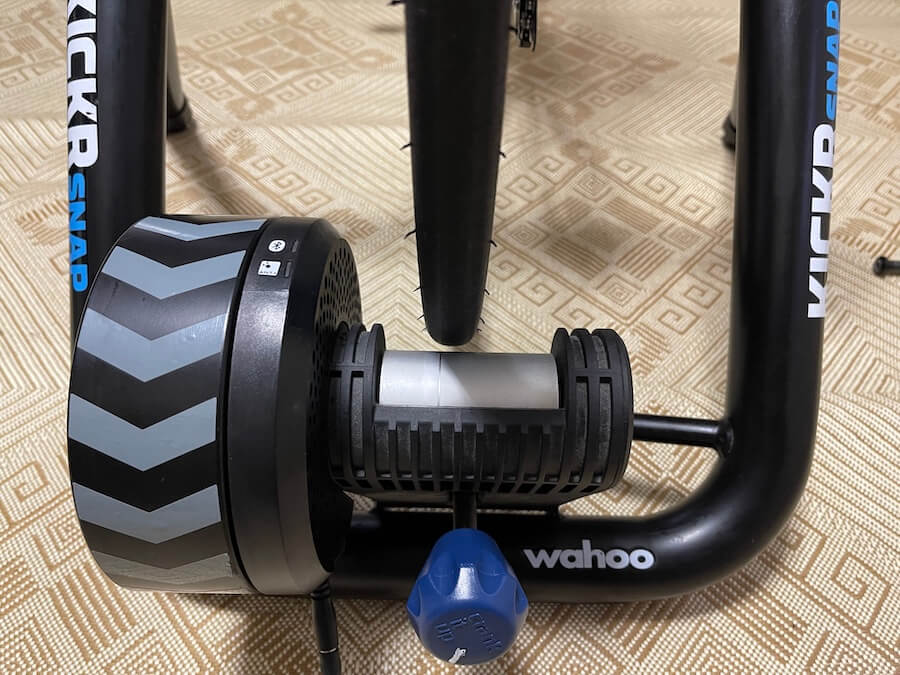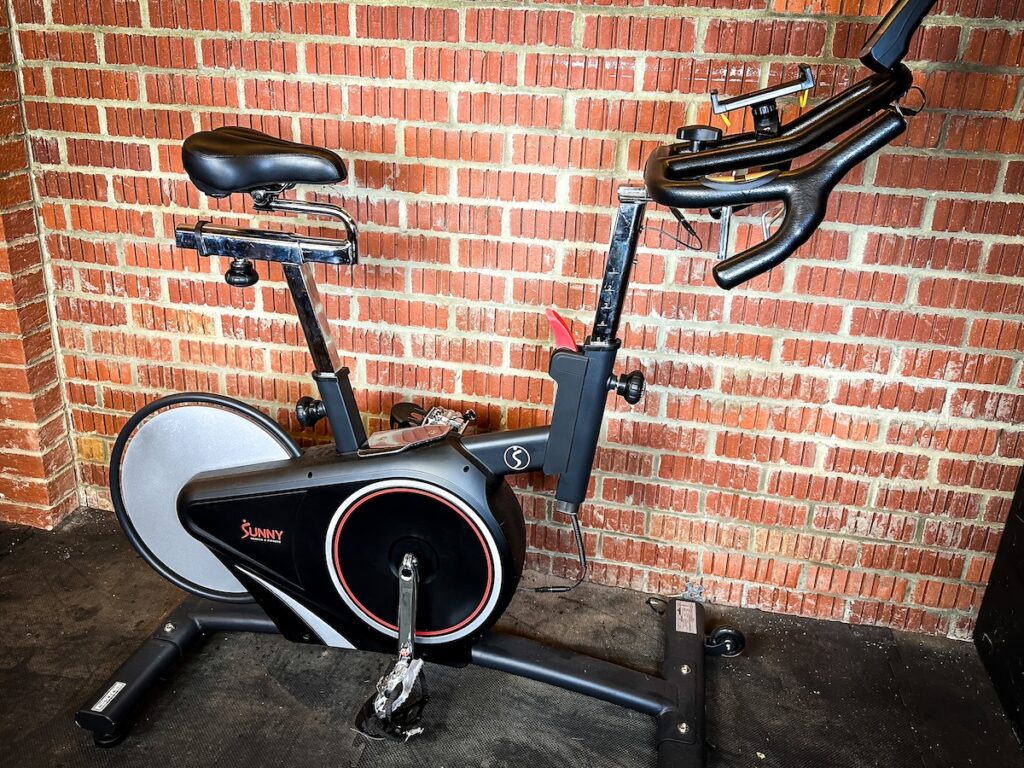Both indoor trainers and stationary bikes have revolutionized the industry in recent years. They have become even more popular during the current pandemic; With gyms closed and many people unable to train outdoors, the smart trainer and spin bike have been a savior for many fitness enthusiasts.
But the question is which one to choose?
They both have pedals, a seat, and handlebars, so what’s the difference? Well, as you’re going to read in this article, the smart trainer and spin bike, although they may look similar, couldn’t be further apart.
Main Differences and Comparison Table
Almost everyone has either seen or used a spin bike in the gym at some stage or another. Some people also refer to them as “stationary bikes”; however, these are different again. Indoor fitness bikes are much more robust and provide a more realistic riding experience than the humble stationary bike.
Indoor fitness bikes have become increasingly popular in recent years. Several big brands, such as Peloton and Schwinn, have led the way in design and manufacturing.

Alternatively, Smart indoor trainers take a little space, with the main difference being you need to have a bike to use one. A monthly membership fee to a compatible cycling app such as Zwift or Wahoo is also required. You’ll need an app to access the virtual worlds, races, and training programs, plus be able to track your ride data accurately.
| Indoor Trainer | Spin Bike | |
|---|---|---|
| Footprint | Minimal space needed | Takes up more space than a smart trainer |
| Storage | Easy to store | Takes up a lot of space |
| Ergonomics | Fitted to your riding style | Good fit for regular gym goers |
| Convenience | Can be difficult and time-consuming | Easy to use |
| Sound | Typically loud | Quiet compared to a smart trainer |
| Main Objective | Serious cyclists | Perfect for gym goers |
| Resistance System | Direct Drive | Magnetic or belt drive |
What is a Smart Trainer
Simply put, smart indoor trainers, are a specially designed cycling tool that allows you to attach your road or mountain bike to a drivetrain or flywheel. The primary benefit is these trainers let you use your current bike with no need to outlay money for a specific indoor bike.
You can purchase two types of smart trainers; the “wheel-on” and the “direct-drive” type.
Direct- Drive

This style of smart trainer requires you to remove the rear wheel and attach your bike to a cassette. Direct Drive trainers do a much better job tracking your ride data and metrics.
This is because your bike is directly connected to the trainer providing accurate and instant feedback. The resistance is provided by way of a motor or belt. The level and accuracy of resistance delivered are better than its “wheel-on” counterpart. Beware, though, Direct Drive trainers are expensive, and unless you’re a hardcore cyclist probably aren’t for you.
Wheel-On

As the name suggests, your rear wheel remains in place and comes in contact with a smooth metallic flywheel or cylinder to provide and control the power.
The wheel-on trainers are an excellent option for those on a limited budget or those who don’t ride regularly but don’t be fooled, I’ve been using a Wahoo Kickr Snap for four years now, and it hasn’t missed a beat [fingers crossed]
Compared to the Direct Driver trainers, wheel-on trainers are much easier to set up as there’s no need to remove your rear tire. However, there are two significant downsides. Your back tire will wear relatively quickly, and calibration of the trainer is recommended before each session which can take time depending on the wifi connection.
What is a Spin Bike
The term “spin bike” is actually trademarked by its owner Mad Dog Athletics, the original manufacturer to design and develop the bike. Mad Dog Athletics was also the first to manufacture stationary or recumbent bicycles. Since then, they have gone on to dominate the industry.

There are now numerous indoor cycling companies, and choosing the right one can be confusing. Many top brands such as Schwinn and Peloton come equipped with the latest technology, including 22″ LCD screens, heart rate monitors, BlueTooth, and access to live and on-demand classes.
Spin bikes are robust and durable and built with tough training sessions in mind. Tracking data and metrics is easy with most spins bikes tracking distance, time, cadence, calories, and heart rate. Unlike a regular stationary bike, spin bikes are far better designed, and the ride ergonomics are fully adjustable.
Adjusting resistance is also easy. Simply turn a mechanical knob located on the frameset. Resistance is generally magnetic, making for a smooth and quiet riding experience. Other accessories typically included are water bottles, built-in fans, and even lightweight dumbbells.
Detailed Comparison
Differences in Resistance
The resistance provided by smart trainers and spin bikes couldn’t be further apart when it comes to resistance. Smart trainers either provide their resistance mechanically or physically, depending on the type of trainer.
On the other hand, Spin bikes use magnetic or electronically controlled resistance, which provides users with up to 100 levels of micro-adjustable resistance and a smooth-riding experience.

Adjusting the resistance also varies significantly between smart trainers and spin bikes. A smart trainer will utilize advances in technology via your smartphone or PC. At the same time, conventional spin bikes need to be adjusted manually, generally by turning a knob on the bike’s frame.
The differences in resistance mean two vastly different riders use spin bikes and smart trainers. Spin bikes are generally used by fitness enthusiasts who enjoy running, cycling, and rowing, while the more dedicated hardcore cyclist prefers the realistic experience smart trainers offer.
Training Classes And Programs
Actually, training programs and classes are almost identical for spin bikes and smart trainers. This is because the app and technology do all the muscle work, not the bike itself. So whether you’re after a lung-busting high-intensity session or a longer fat-burning ride, then both the spin bike and smart trainers will more than do the job.
Peloton, for example, offers live and on-demand training sessions that have been designed by some of the best cycling coaches in the world. There’s something for everyone with group leaderboards, races, and my personal favorite, the live classes.
Subsequently, smart trainers connect to apps such as Wahoo and Zwift via BlueTooth or ANT+ connection. Zwift allows you to ride the exact routes of some of the most famous professional cycling races globally, like the Tour De France. Ride the iconic Mont Ventoux or climb Alpe D’huez; it’s all possible at the touch of a button.
Ergonomics and Bike Fit
Bike fit and geometry are the two most significant aspects of achieving a comfortable and efficient ride for any serious rider.
This is why most hardcore cyclists choose to select the smart trainers as their trainer of choice. It’s not necessarily the trainer itself that is so attractive. It’s the fact that cyclists can continue riding with their bikes, meaning ergonomics and geometry are not sacrificed.

On the other hand, Spin bikes have drastically different riding positions than your typical road bike. Although spin bikes have adjustable saddles and handlebars, they are not as customizable as road bikes.
The obvious action to take is purchasing a spin bike to counter this problem, especially for those who currently don’t have a bike. This makes the most sense in achieving your fitness goals and saving money.
If you already own a road bike, you’re more than likely a serious rider, and spending another $1000 on a spin bike makes no sense at all. You’ll not only burn a big hole in your wallet, but you’ll interrupt with your regular, efficient pedaling stroke and position on the bike.
Main User Objective
Deciding whether to choose a spin bike or smart trainer can be daunting. But when you take the time to answer a couple of crucial questions, the task becomes much more manageable.
If you’re a serious hardcore cyclist, purchasing a smart trainer would be your best bet. You won’t need to outlay extra cash as you already have a bike. Most importantly, the riding experience is not compromised, making the experience enjoyable and helping reduce injury.
On the other hand, if you’re a beginner at indoor cycling and don’t have a bike, purchasing a spin bike would benefit you most. Take your time to research which spin bike suits you.
Understanding your fitness goals, how often you plan on riding, your budget, how ample your dedicated training space is, and whether you currently own a bike are all critical to making the right choice.
Verdict
To spin or to ride? I’m sure if you follow the advice and information detailed above, you’ll come up with the correct answer for you.
Happy cycling!

Fantastic article. Gratitude.
I currently have 3 bikes. My old jumping bike, an XXL BMX. I spent a large portion of my life on it, it’s like an old friend.
A single speed road bike, not a fixie. Changing power is done with cadence, like a track bike. I love it.
And a Peloton. I get to ride with Christian Vande Velde and Christine D’Ercole, two pro riders who instruct power zone training. They do race simulation, my favorite. Both being very successful in their pro career they are motivating in an out of this world way.
Each of these three bikes has a time and a place. I love them all. They are all geometrically and ergonomically different but they all fit me to perfection. I used to ride the two bikes on a set of rollers in front of the TV, but no longer.
Recently I spend more time on the Peloton by far. It’s just too convenient and provides amazing workouts.
Verdict, spin and ride both
Carlos,
Thank you so much for your fascinating info that you shared with our community!
Indeed, with the Peloton you get a really plug-and-play experience.